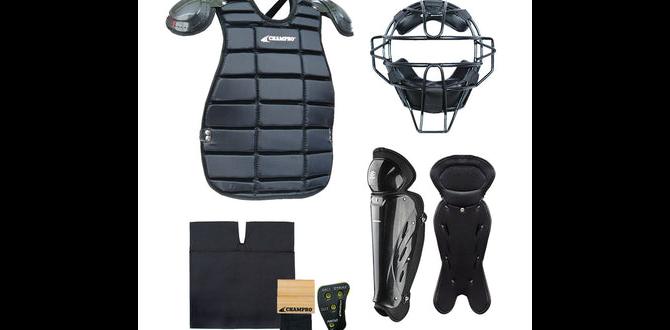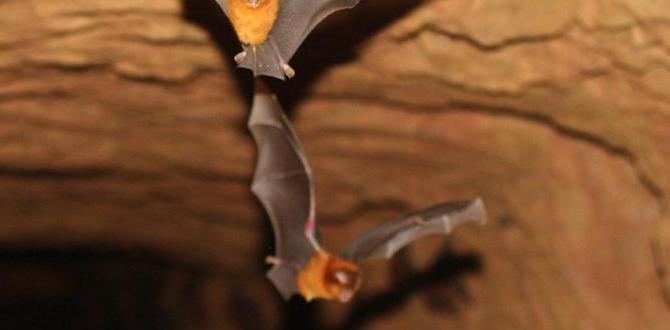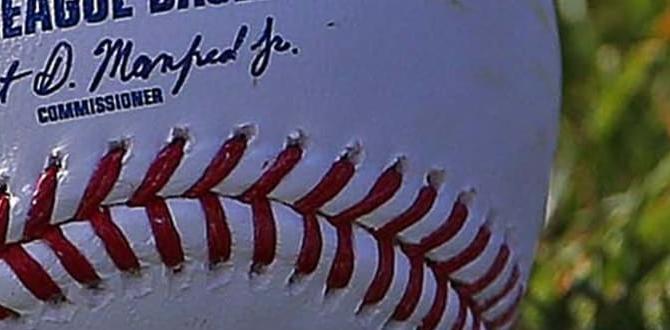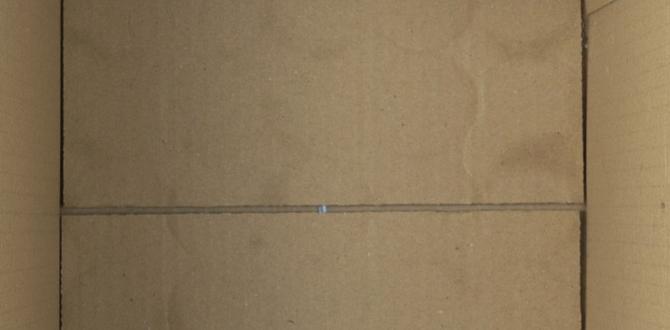Easton catchers throat guards are a vital piece of equipment for protecting young players from high-velocity pitches and foul balls. This guide provides straightforward reviews and essential information to help you choose the right guard for safety and comfort.
Catching in baseball is an exciting but demanding position. You’re right behind the plate, calling the game and receiving every pitch. But what happens when a stray pitch or a screaming foul ball comes your way? That’s where a catcher’s throat guard becomes absolutely essential. Without one, a direct hit to the throat could be incredibly serious, potentially ending a player’s season—or worse. Many parents and young players worry about finding the right gear that offers top-notch protection without being uncomfortable or getting in the way. It’s a common concern, but don’t sweat it! We’re going to break down everything you need to know about Easton’s throat guards, making it super easy to pick the perfect one for safety and confidence behind the plate.
Why Your Catcher Needs a Throat Guard
Think of your catcher’s throat guard as a baseball player’s seatbelt. It’s a protective shield specifically designed to safeguard the delicate throat area from impact. In baseball, especially at faster youth leagues and beyond, pitches can travel at high speeds. Foul tips and errant pitches are common occurrences. A direct hit to the throat area can cause severe injuries, including damage to the trachea, esophagus, and even the carotid arteries. Proper protection isn’t just about comfort; it’s a critical safety measure that can prevent serious harm and allow young athletes to play with confidence.
The Little League Baseball and Softball rules, and most sanctioning bodies for youth baseball, mandate specific safety equipment for catchers, including helmets with face masks and throat protection. This highlights the universal understanding of the risks involved. An Easton throat guard, when properly fitted and attached, adds a crucial layer of defense, allowing catchers to focus on their game instead of worrying about potential impacts.
Easton: A Name You Can Trust in Baseball Gear
Easton has been a cornerstone of baseball equipment for decades, synonymous with quality and innovation. From their legendary bats to their durable catcher’s gear, Easton consistently provides athletes with reliable products designed to enhance performance and ensure safety. When it comes to catcher’s protection, Easton’s commitment to player safety is evident in their thoughtful designs. Their throat guards are engineered to integrate seamlessly with their catching helmets, offering a secure fit and maximum coverage without hindering the player’s vision or movement.
Many professional and amateur players alike choose Easton because they know they’re getting gear that has been rigorously tested and developed with input from athletes. This dedication translates into protective equipment you can depend on, game after game. For parents and coaches, choosing Easton means investing in peace of mind, knowing that your young catcher is equipped with some of the best protective gear available on the market.
Understanding Easton Throat Guard Features
Easton offers a range of throat guards, each designed with specific features to meet different needs and preferences. When looking at their models, consider these key aspects:
- Material: Most Easton throat guards are made from high-impact plastics or durable rubber compounds. These materials are chosen for their ability to absorb and deflect the force of impact.
- Fit and Attachment: The way a throat guard attaches to the catcher’s helmet is crucial for stability. Easton guards typically use a secure clip or screw system that directly affixes to the catcher’s mask. Easy-to-use attachment points ensure the guard stays in place even during vigorous activity.
- Coverage Area: Different models offer varying degrees of coverage. Some are more minimalist, while others extend further down to provide more protection. The ideal coverage depends on the player’s size and the level of play.
- Comfort and Flexibility: While protection is paramount, comfort is also important. Guards designed with some degree of flexibility can help absorb impact more effectively and feel less restrictive for the player.
- Compatibility: Ensure the specific throat guard you’re considering is compatible with the Easton catcher’s helmet your player is using. While many are universal, it’s always best to double-check.
Top Easton Catcher’s Throat Guard Models: Reviews and Comparisons
Easton offers stellar options for catcher’s throat protection. While models can change year to year, here’s a look at some commonly available and well-regarded types of Easton throat guards and what makes them stand out.
Easton Youth Catcher’s Helmet Replacement Throat Guard
This is a popular choice for younger players. Designed to fit Easton’s youth catcher’s helmets, it’s a straightforward, effective solution for essential protection. It’s generally made of durable plastic, offering good coverage for the typical impact zones seen in youth baseball. It attaches easily using existing helmet screws or clips, making installation a breeze for parents or coaches.
Pros:
- Excellent value for money.
- Easy to attach and remove.
- Good coverage for younger players.
- Durable construction.
Cons:
- May not offer the same extended coverage as some larger models.
- Best suited for specific Easton youth helmet models.
Easton Pro Series Catcher’s Helmet Throat Protector
For players stepping up their game, the Easton Pro Series throat protector offers enhanced features. These are often designed for a more secure, integrated fit with Easton’s adult or intermediate-sized catcher’s helmets. They might be constructed with slightly more advanced materials or have a design that offers a bit more extended coverage, which can be beneficial for pitchers or highly competitive leagues where ball speeds are higher.
Pros:
- Superior protection and extended coverage.
- Designed for a secure, integrated fit with Pro Series helmets.
- Durable and built to withstand higher impact speeds.
- Streamlined design that doesn’t impede vision.
Cons:
- Typically a higher price point than youth models.
- May require specific helmet models for optimal fit.
Easton Universal Catcher’s Throat Guard
Easton sometimes offers a universal throat guard designed to fit a wider range of catcher’s helmets, not just their own. This can be a great option if you’re not sure about helmet compatibility or if you’re looking for a flexible solution. These guards often feature adjustable straps or a design that can be adapted to different mask shapes.
Pros:
- Fits a variety of catcher’s helmet brands and models.
- Versatile and a good option if you’re unsure about compatibility.
- Provides reliable protection for the throat area.
Cons:
- Fit might not be as perfectly integrated as a model designed for a specific helmet.
- May require some minor adjustments for optimal security.
Choosing the Right Easton Throat Guard: A Step-by-Step Guide
Selecting the ideal Easton throat guard involves a few straightforward considerations. Follow these steps to ensure you make the best choice for your player:
- Identify the Catcher’s Helmet: The first and most important step is to know exactly which Easton catcher’s helmet your player uses. Check the helmet itself for model names or numbers. Understanding if it’s a youth model, an intermediate size, or a pro-style helmet will narrow down compatible throat guards.
- Determine the Player’s Age and League Level: Younger players in youth leagues generally need reliable, standard protection. Older or more competitive players might benefit from guards with enhanced coverage or more robust materials designed for higher pitch speeds.
- Check for Direct Attachment Points: Look at the catcher’s helmet. Does it have specific screw holes or mounting points where a throat guard is meant to attach? Easton guards that designed for specific helmets will align perfectly. If it doesn’t have obvious points, you might need a universal model that uses straps, or you might need to consult the helmet’s manual.
- Consider Coverage Needs: Do you want a guard that offers minimal, standard, or extended coverage? Standard guards cover the basic throat area. Some players prefer extended models that offer a bit more protection for the upper chest and neck.
- Read Reviews (Like These!): Always dive into product reviews. See what other parents, players, and coaches are saying about the specific Easton throat guard you’re interested in. Look for comments on durability, ease of attachment, and how well it stays in place.
- Prioritize Safety Standards: While Easton is a reputable brand, it’s good to ensure any gear meets current safety standards for baseball. For most youth leagues, this is implicitly handled by reputable brands, but it’s an extra layer of assurance. According to standards bodies like ASTM International, protective equipment must meet rigorous testing protocols.
Installation and Maintenance Tips
Once you’ve chosen your Easton throat guard, proper installation and maintenance will ensure it performs its best and lasts longer. Attaching the guard is usually quite simple, but following these tips can help:
Installation:
- Gather the Right Tools: Most Easton throat guards attach using existing screws on the catcher’s helmet, or they might come with their own hardware. You might need a Phillips head screwdriver.
- Align the Guard: Carefully position the throat guard against the helmet, ensuring it aligns with the designated mounting points.
- Securely Fasten: If using screws, insert them through the throat guard and into the helmet. Tighten them until the guard is snug and doesn’t wobble, but be careful not to overtighten, which could strip the threads or damage the helmet.
- Test for Stability: Gently tug on the guard to make sure it’s securely attached and won’t shift during play.
Maintenance:
- Regular Cleaning: After games and practices, wipe down the throat guard with a damp cloth to remove dirt and sweat. Mild soap and water can be used for tougher grime, but ensure it’s rinsed thoroughly and air-dried.
- Inspect for Damage: Periodically check the throat guard for any cracks, deep scratches, or signs of wear. If you notice any damage, especially if it compromises the guard’s integrity, it’s time to replace it.
- Check Attachment Points: Even if there’s no visible damage, occasionally check that the screws or clips holding the guard are still tight and secure.
- Avoid Harsh Chemicals: Do not use abrasive cleaners or solvents, as these can degrade the plastic and weaken the protective capabilities of the guard.
The Importance of Fit and Comfort
Protection is key, but a throat guard that is uncomfortable or doesn’t fit correctly won’t be worn consistently, negating its safety benefits. An ill-fitting guard can:
- Cause neck irritation or chafing.
- Interfere with the player’s vision or breathing.
- Shift during play, leaving the throat exposed.
- Make the player feel self-conscious, impacting their confidence.
Easton aims to create guards that are both protective and ergonomic. When trying on a helmet with a throat guard, encourage the player to move their head, look up and down, and simulate catching motions. They should be able to breathe comfortably and have a clear line of sight without the guard obstructing their view. A properly fitted guard feels like a natural extension of the helmet, providing peace of mind without drawing undue attention.
When to Replace Your Easton Throat Guard
Just like any piece of athletic equipment, throat guards have a lifespan and can be damaged. Replacing your Easton throat guard is essential for maintaining optimal protection. Here are key signs indicating it’s time for a replacement:
- Visible Cracks or Fractures: Even small cracks can compromise the guard’s ability to absorb impact. If you see any, replace it immediately.
- Deep Scratches: While minor surface scratches are usually cosmetic, very deep ones could indicate a weakened material.
- Missing or Damaged Hardware: If the screws or clips that attach the guard are missing, broken, or stripped, the guard won’t stay securely in place.
- Signs of Wear and Tear: If the material appears significantly faded, brittle, or distorted, its protective qualities may be diminished.
- After a Significant Impact: Even if there’s no visible damage, if the throat guard has taken a direct, hard hit, it’s a good practice to replace it. The impact can create unseen internal damage that reduces its effectiveness. Resources like the NCAA Baseball Rules often emphasize equipment integrity.
Don’t wait until it’s too late. Prioritize safety and ensure your young catcher always has a reliable throat guard in good condition.
FAQ: Your Easton Catcher’s Throat Guard Questions Answered
Q1: Are Easton throat guards universal?
A: Some Easton throat guards are designed to be universal, meaning they can fit a wider range of catcher’s helmets. However, many are designed specifically for certain Easton helmet models (e.g., youth helmets, specific senior models). Always check the product description for compatibility information.
Q2: How do I attach an Easton throat guard to my catcher’s helmet?
A: Most Easton throat guards attach using the screws already present on the catcher’s mask, or they come with their own hardware. You’ll typically align the guard with the mounting points on the helmet and secure it with screws, often needing just a Phillips head screwdriver. Some universal models might use adjustable straps.
Q3: What’s the difference between a youth and an adult Easton throat guard?
A: The main differences are typically size, coverage area, and the design of the helmet it’s meant to fit. Youth guards are smaller and designed for smaller helmets, offering adequate protection for younger players. Adult or intermediate guards may offer more extended coverage and be designed to fit larger, more robust helmets used by older players.
Q4: Can any Easton throat guard be used with any Easton helmet?
A: Not always. While Easton strives for some interchangeability, it’s best to confirm compatibility. Check the product details for the specific helmet model and throat guard model to ensure a proper and secure fit. Mismatched guards might not attach correctly or offer optimal protection.
Q5: How often should I replace an Easton throat guard?
A: You should replace your Easton throat guard if it shows any signs of visible damage, such as cracks or deep scratches, or if it has sustained a significant impact. Even without visible damage, it’s good practice to consider replacement every few seasons, especially for players in competitive leagues, or if the material appears worn and brittle.
Q6: Is it okay if the throat guard is a little loose?
A: No, not at all. A throat guard must be securely attached to the helmet and should not wobble or shift. A loose guard can be ineffective in protecting the throat and could even be a hazard. Ensure it’s firmly fastened.
Conclusion: Play with Confidence, Protected by Easton
As a catcher, you’re the backbone of the defense. You need gear that protects you so you can focus on making plays, calling pitches, and leading your team. Easton understands this, offering reliable, well-designed throat guards that provide that essential layer of safety. Whether you’re outfitting a young player just starting in Little League or gearing up for a competitive travel ball season, an Easton catcher’s throat guard is an investment in protection and confidence.
By understanding the key features, choosing the right model for your helmet and player, and maintaining it properly, you ensure that this vital piece of equipment will serve its purpose effectively for seasons to come. Don’t compromise on safety – choose Easton and step behind the plate ready to play your best, knowing you’re well-protected.




